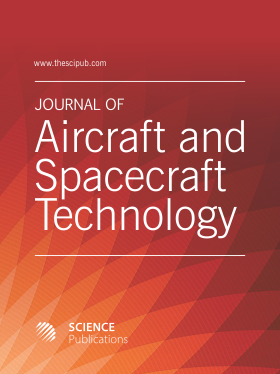Airlander
- 1 Bucharest Polytechnic University, Romania
- 2 Second University of Naples, Italy
- 3 American University of Ras Al Khaimah, United Arab Emirates
- 4 Florida Institute of Technology, United States
- 5 North Carolina A and T State University, United States
Abstract
Man always dreamed of flying. The important thing is not that it succeeded but that it has evolved permanently, improving its flight. The main problem in aviation was also the safety of the flight. How to keeps in the air, even when serious problems arise. Generally, the porting was made with engines and wings. But such support can’t be very secure. The only very safe means to date has proved to be the airship. Everything started from the balloons with those men first traveled, they being lighter than the air. Today it seems very strange to revive the airships, but here we do it. A balloon or airship, being lighter than air, can keep in the air for a long time, without wings, without engines, without energy consumption. For now, it's the only way to fly safely, even if it looks outdated or difficult. No other flying device can ensure vertical take-off and landing, regardless of geographic and meteorological conditions and staying in the air for a long time at a certain height, regardless of weather or situation. Today, some devices can be built to cancel the gravitational field using electromagnetic waves. Even though they have not been officially presented and have not yet been introduced into civil aviation, they will probably represent the dynamic and safe way of flying in the near future. But they can also have electromagnetic or software interruptions and consume a lot of energy. So, whether we like it or not, the safest way to fly is the one with the balloon. A modern airship can be built to fly at any desired altitude, even very close to the ground, higher or very higher. Airlander, which has 48 passengers, needs helium. He will be able to stay in the air for two weeks without landing, devastating at a cruising speed of 145 km/h at an altitude of 6,000 m. It can have a load of 10 tons aboard. Many believe that four-engine cars are approaching because, unlike conventional airplanes, they pollute very little and are not booming. In addition, Airlander can take off vertically, as a helicopter, meaning it does not need trace. It can land on snow, ice, dessert or even water. British company Hybrid Air Vehicles was the developer of the US Army, but the project was abandoned in 2013, when the funds were reduced. Behind the project, Iron Maiden, Bruce Dickinson, invested 250,000 pounds. Money came from both the British government and the EU. Airlander was tested in November 2015 and was presented to the public in March 2016.
DOI: https://doi.org/10.3844/jastsp.2017.119.148

- 4,186 Views
- 2,686 Downloads
- 12 Citations
Download
Keywords
- Airlander
- Spacecraft Propulsion
- Short take off
- Vertical Landing
- Vertical Landing Aircraft
- Aircraft Carriers
- Heavy Payload
